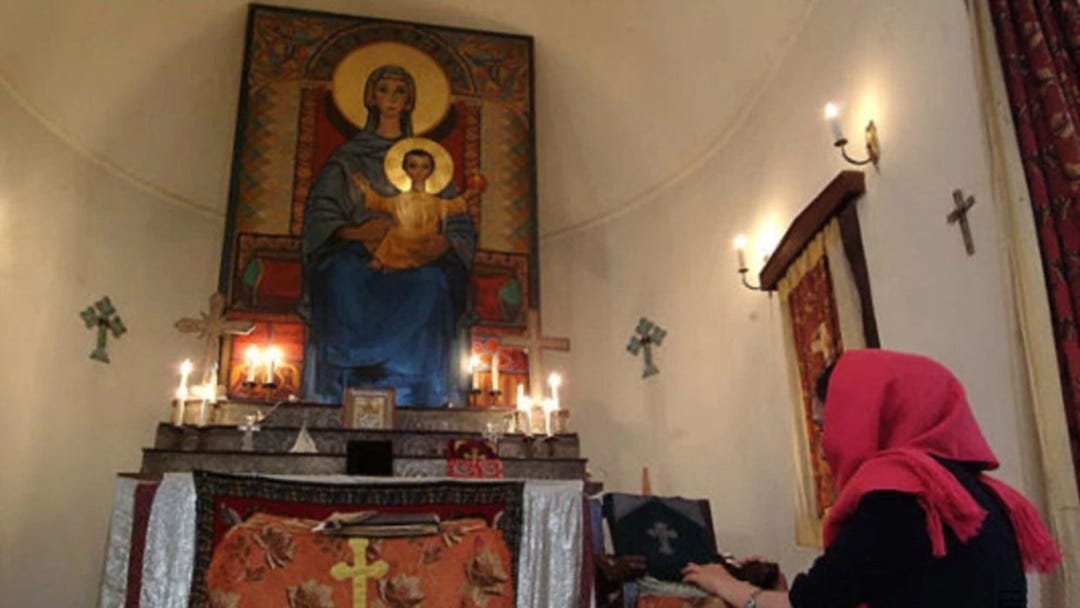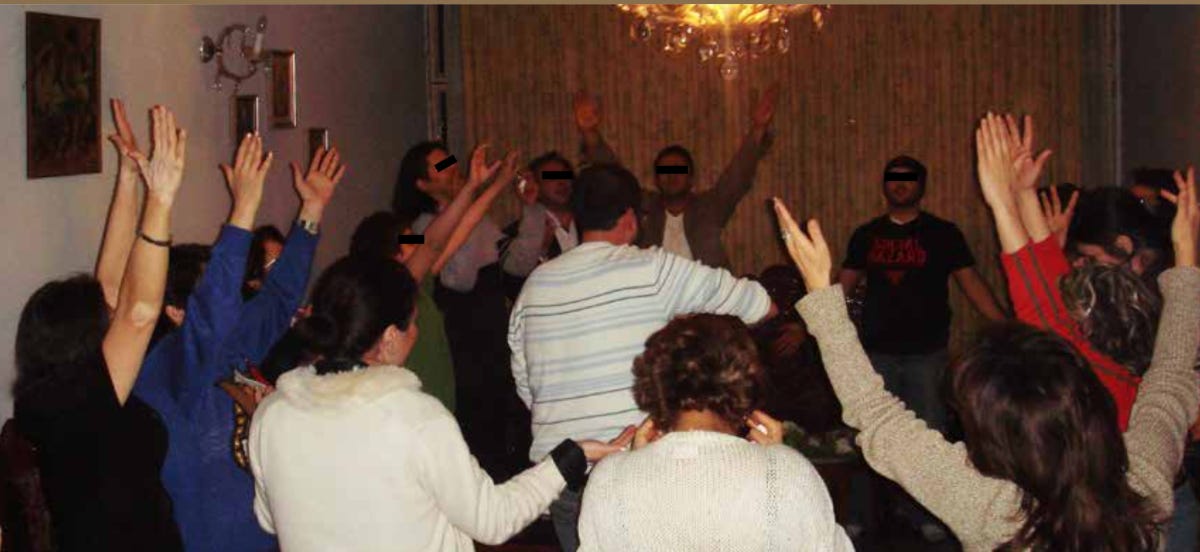Iran’s Christian Conversion
Despite surveillance, imprisonment, and persecution, Christianity is quietly becoming Iran’s fastest-growing faith.
In one of the world’s most repressive regimes, something extraordinary is happening. Beneath the weight of censorship, religious policing, and constant surveillance, tens of thousands of Iranians are quietly turning to Jesus Christ.
There is no social advantage nor is this a political protest. In fact, the consequences are severe. Under Iran’s blasphemy laws, conversion from Islam is considered apostasy, a crime punished by imprisonment, torture, and death. And yet, Christianity is growing. More and more Iranians are finding Christ, often at great personal cost.
This is not an isolated trend. It is a national transformation unfolding house by house, in small, secret churches hidden from view, much like the underground Jewish worship gatherings in Nazi Germany.
Welcome to Iran’s Christian revolution.
The Fastest-Growing Church in the World?
Despite being officially an Islamic republic, Iran is now home to one of the fastest-growing Christian movements in the world. According to Open Doors, which tracks persecution globally, Iran ranks among the most dangerous places to be a Christian. And yet, the underground church there is expanding rapidly.
Reliable figures are difficult to obtain, but several independent studies, including a 2020 survey by the Netherlands-based GAMAAN group, suggest that at least 1.5% of Iranians now identify as Christian. In a nation of over 80 million, that means more than a million believers, most of whom are converts from Islam.
Iran’s government recognizes only traditional Christian minorities (like Armenians and Assyrians), but it criminalizes conversion and bans Persian-language worship services. On multiple occasions, the regime has deployed agents to identify and arrest those who show interest in Christianity. Yet none of this has stopped the growth. If anything, the risk seems to be accelerating it.
“But the more they were oppressed, the more they multiplied and the more they spread (abroad).” Exodus 1:12

Why Now?
The Christian surge in Iran didn’t emerge in a vacuum. It’s the result of several overlapping forces:
Widespread Disillusionment with Islam and the Regime
Since the 1979 Islamic Revolution, Iran has experienced decades of authoritarian rule in the name of Shiite Islam. Many Iranians, especially younger generations, now associate religion with hypocrisy, oppression, and corruption. Polls show a massive decline in Islamic observance, with around a third of Iranians now identifying as practicing Shiites, despite the regime’s claim of 95% as of 2023 reports.
Digital and Satellite Evangelism
Though Iran strictly censors the internet and bans Christian literature, the Gospel still reaches millions via satellite TV and encrypted apps. Channels like SAT-7 Pars, Mohabat TV, and Iran Alive Ministries broadcast Persian-language Christian programming 24/7. Iranians can download Bibles, join online discipleship groups, and even attend virtual house churches.
The Iranian Diaspora
Thousands of Iranians who fled persecution now live in the West. Many found Christ abroad and now support outreach efforts back home through prayer, teaching, and translation. They are the bridge between the underground church in Iran and the global body of Christ.
Supernatural Encounters
Numerous Iranian converts report dreams and visions of Jesus… Startling, intimate encounters that bypass political or religious rhetoric. One former imam said: “I saw a man in white who called me by name. He said, ‘Follow me.’ I could not deny the love I felt.”
Whether through high-tech means or supernatural visitation, the message is the same: Christ is calling Iranians to Himself, and they are responding.
Stories of Courage
Conversion in Iran isn’t just a spiritual decision, it’s a life-altering risk. Yet the stories of those who follow Christ are marked by extraordinary conviction. Below are some of the stories I have found for Aquinas Academy. Names have been altered for safety by the primary sources.
Fatemeh
A young mother who joined a house church, Fatemeh was forced to sign a pledge renouncing her faith after police raided a Bible study. She didn’t comply. Instead, she began hosting meetings herself. “We gathered with caution,” she said. “But we tried to create a peaceful space for prayer and worship.”
Kamran
Son of a pastor, Kamran faced multiple arrests and long-term solitary confinement. “They tried to break me down mentally and emotionally,” he said. Ultimately forced to flee, he continues supporting the underground church from abroad.
Youcef Nadarkhani
Perhaps the most well-known case highlighting the long-term struggle of Christians in Iran. A former Muslim who converted to Christianity, Nadarkhani became a pastor and house church leader. In 2010, he was arrested and sentenced to death for apostasy and refusing to recant his faith. After intense international pressure, he was acquitted in 2012 but continued to face harassment.
In 2018, he was violently re-arrested and imprisoned again. Most recently, he was released in 2023 after spending years behind bars. Despite beatings, threats, and unjust trials, Nadarkhani has remained steadfast.
Hope from the Margins
Iran’s Christian revolution isn’t driven by media, politics, or social power. It’s driven by ordinary people who’ve encountered the living God and are willing to risk everything to follow Him. It’s a reminder that revival doesn’t start with stadiums or slogans. It starts with faith, often in hidden places, often in pain.
The Apostle Paul once wrote, “We are hard pressed on every side, but not crushed; perplexed, but not in despair… struck down, but not destroyed.” That’s Iran’s church today.
In the shadow of oppression, a light is rising.
“The light shines in the darkness, and the darkness has not overcome it.” John 1:5





